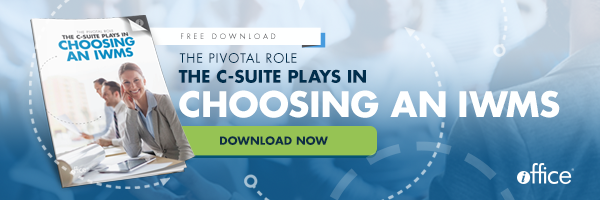How Employee Expectations Can Be Managed By Workplace Leaders


Unfortunately, employee expectations have become unrealistic in the workplace as a result of being impacted by the push for instant gratification and a consumer-centric marketplace in retail and e-commerce. But those employee expectations can be managed.
 You’re doing everything in your power to set employee expectations in the workplace and make your workforce happy by…
You’re doing everything in your power to set employee expectations in the workplace and make your workforce happy by…
- Providing the latest workplace technology
- Creating a progressive work environment filled with like-minded individuals
- Building a strong company culture
But since the balance in the business world is shifting more in their favor, the requests and employee expectations may be getting a little extravagant.
4 Ways Employee Expectations Can Be Set
- Define the Role of Each Employee
- Create Supervisor-Employee Boundaries
- Connect Employees With the Company Culture
- Remind the Employee Flexibility is a Privilege
Below we expand on those four ways workplace leaders can set and manage employee expectations from Day One.
1. Define the Role of Each Employee
From the first interview to their first day, you should be direct and honest with the employee about the responsibilities and challenges of their job. Discuss in detail the physical and/or mental demands, the work environment and potential stressors they should be aware of.
Tell the employee exactly what you expect and reiterate these expectations several times throughout the orientation and onboarding process. You should also have these conversations when the employee is assuming a new position in the company, whether it be a promotion or lateral move, to set those new employee expectations.
Encourage the employee to ask questions about anything and everything. You may have missed covering a topic that is unique to that employee’s position, which opens the door for potential future misunderstandings. Most importantly, remember that the employee may not even know what they don’t know. So don’t just say, “Any questions?” Give them examples of questions new employees have asked in the past.
2. Create Supervisor-Employee Boundaries
To be an effective workplace leader, you can be “friendly,” but you cannot be their “friend.” You don’t want to set a precedent of you vs. them but you do need to establish your relationship with the employee and set clear boundaries. Don’t worry: achieving this equilibrium is something many managers struggle with.
What it boils down to is fairness and accountability. If employees view you as a workmate instead of a work-leader, they will be more inclined to ask beyond what they know is reasonable and may feel as if they can be more demanding. It’s a lot more difficult to turn down a request from someone who you sing karaoke with every Wednesday.

3. Connect Employees With the Company Culture
To effectively set and manage employee expectations in the workplace, the employee must know what part they play in company operations. Don’t just show them the company’s mission statement—explain why it’s important to you and your team. Discuss the company culture in depth, focusing on the employee’s specific role within the company as a whole and the team in particular and how your employee expectations fit in the overall mission of the company.
Create opportunities for the new hire to integrate with the company culture and bond with their team members both inside and outside of work. For example, schedule a team outing within the first week or two of the employee starting. This can help the employee get a better understanding of the dynamic of the team and how they’ll fit in.
Be sure to remind them this activity is off-the-clock. So while they must keep in mind they’re out with colleagues, they won’t feel pressure to stay in work mode and to keep the conversation purely work-related.
4. Remind the Employee Flexibility is a Privilege
A 2016 survey by FlexJobs found that 87 percent of professionals believe having a flexible job would lower their stress. And a study by the Society for Human Resource Management (SHRM) revealed 89 percent of companies experienced better retention after offering flexible work arrangements.But flexibility means more than offering a compressed workweek or remote employment opportunities or the ability to personalize a work schedule. It means building an environment where employees have tools and technologies they need to achieve fluidity in the office.
The one drawback of the greater sense of autonomy provided by a smart digital workplace is it can impact the productivity employees who are less disciplined than others. Let new team members know more freedom does not mean decreased responsibility.
How Workplace Software Can Help Manage Expectations
One last thing: Workplace leaders who use specialized software—such as an integrated workplace management system (IWMS)—to keep a pulse on their entire operation have an easier time understanding when requests are unreasonable and when requests actually make sense. Your ability to prioritize requests and respond accordingly will prevent you from being viewed as unaccommodating or, on the other end of the spectrum, a pushover. Equally as important, you can prove through action that you support your workforce, which will impact employee satisfaction and productivity.
Smart workplace leaders know how to leverage the tools at their disposal to build a productive workplace and a happy workforce. Check out our free SlideShare 8 Innovative Tools for Extraordinary Facilities Managers to learn how to work smarter, not harder.
